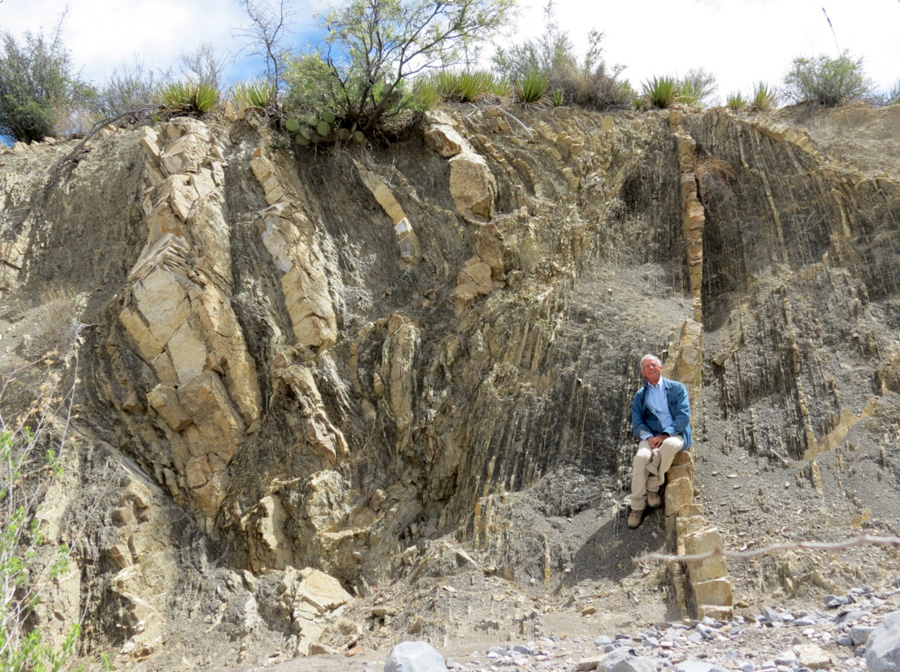Complex and often deep structures continue to hold great potential. Welcome to an interview with Samuel Eguiluz y de Antuñano, who is a member of the technical committee for AAPG’s Hedberg Research Conference on the Geology and Hydrocarbon Potential of the Circum Gulf of Mexico Pre-Salt Section, 4 – 6 of February in Mexico City. In addition to discussing the Gulf of Mexico, the conference will also include discussions of analogues and other depositional and structural models for pre-salt reservoirs in other parts of the world.
What is your name and your current position?
Samuel Eguiluz y de Antuñano is a consultant geologist.
What is your background? How did you first become interested in geology?
I worked 29 years in PEMEX EXPLORATION, and a brief time as professor in academic activities in the Institute of Geology and Institute of Engineering at Universidad Nacional Autónoma de México I was also an assessor at the Instituto Politécnico Nacional and the Universidad Autónoma de Nuevo León. I was also the assessor of several domestic and international mining and petroleum companies.
Ever since I was young, I have had a passionate interest in geosciences, including the mountains, fossils and where rocks and minerals are obtained. All these awakened my curiosity.
Where have you worked as a geologist? Which geological locations? (fields, basins, etc.)?
I worked mainly on the conventional and unconventional petroleum systems in several basins of the north of Mexico. I know the stratigraphy and the structural framework on surface and subsurface, and paleogeography evolution from Purisima-Iray basin, in the Baja California, to the Burgos basin in Tamaulipas and Nuevo León. The fold and thrust belts of Chihuahua, Sabinas and Sierra Madre Oriental are quite familiar to me. Currently, I have new projects and I am working new research on the field geology of Chiapas, Michoacán, Colima, Jalisco and Durango areas. The data will be published soon.

Upper Cretaceous the Difunta Group, folded strata below footwall of thrust and detached Sierra Madre Oriental, Parras Sector, Mexico. May 2019.
Please describe a memorable experience for you in your profession as a geologist.
I have many good memories in my professional life, but many special ones in conjunction with the AAPG-SEPM May-1988 field trip. At that time, I met James Wilson, Richards Harris, Joe Finneran, K. Young and other celebrities in geology. En route to a stop of exposures continental Triassic in Galeana locality one of them asked me if PEMEX was looking for oil & gas in those types of rocks…. my answer was “not yet.” Some people maliciously smiled looking at my optimism, but now, almost 40 years later, several people and I are beginning to seriously explore those new frontiers, known now as the pre-sal of GoM.
What do you think about the future of oil and gas exploration in deepwater, sub-salt, and pre-salt conditions?
Oil and gas is in the human mind. The technological advances may be possible in the exploration of new frontiers, and there are a lot of resources to discover in areas not explored yet, as some continental platforms, fold and thrust belts, deep-water, pre-salt and not conventional plays around the world.
What are some of the tools and techniques that will be necessary in the future?
Advanced acquisition and processing of seismic technology linked to software and workstations, remote sensing, and better techniques for deep drilling and logs will all be necessary. However, the main tool is the human brain which combines with the field experience within the earth environment.
What are some of your personal opinions about the science of petroleum geology today? What will future geoscientists need in order to succeed?
Petroleum geology today utilizes advanced high technology, and it’s not possible for a single individual to retain all geo-scientific knowledge. It’s only possible with a team of specialists and manager leaders.
Geoscientists need to understand that geological process are complex, and new tools to facilitate doing work in a short time. However, those tools are not substitutes for human experience. The exploratory success resulting in discovering oil and gas depends on taking risk, thinking differently while not disregarding the concepts of geological principles and the fundamentals.
Can you please recommend a good book?
This is the hardest question, because there many good books. My main book is Basin Analysis: Principles and Applications by Philip A. Allen & John R. Allen, Blackwell Scientific Publications.